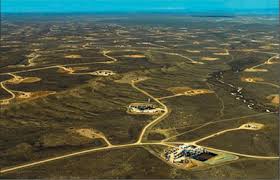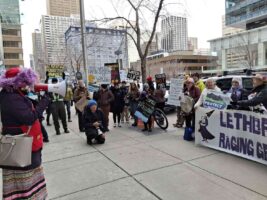New research has suggested that coal seam gas (CSG) is not work the risk to our health and the environment.
The research paper Is fracking good for your health? is co-published by The Australia Institute and The Social Justice Initiative and looks at the existing research of unconventional gas impacts – CSG, shale gas and tight gas – on health and the climate.
“Australia is facing a crucial decade when it comes to energy choices. Our current reliance on coal is unsustainable, so the gas industry is pushing to expand unconventional gas,” researcher from The Social Justice Initiative Jeremy Moss said. “But all the evidence suggests the risks to human health and the climate just aren’t worth it.”
The report found that potential health impacts associated with fracking chemicals are serious. Some of the research analysed for the report finds the risks include cancer, skin and eye irritation, respiratory problems, and damage to the nervous, reproductive and endocrine systems.
It was also suggested that along with physical health impacts there might also be social and psychological issues associated with the practice including the community impact of Fly-In-Fly-Out (FIFO) workers.
Resource conflict is also set to rise as industries fight over land, water and biodiversity putting environmental health and food security at risk.
Currently, around 18,500 kg of additives are injected in fracking for one CSG well in Australia. Research also found that naturally occurring contaminants such as heavy metals and naturally occurring radioactive materials (NORMs) in wastewater pose the greatest hazard, with treated and rereleased wastewater found to contain boron, cadmium, cyanide and zinc.
The report cited cases in the US where wastewater accidents have affected livestock and soil tests, showing high levels of toxic materials, which can adversely affect human health.
Additionally, airborne pollutants associated with unconventional gas developments have serious health implications, especially if future developments take place within urban areas. While levels of many such pollutants are lower than found in coal operations, evidence increasingly indicates that they can affect the population even very small quantities.
It was also reported by RenewEconomy, in late last year, that the Government has seriously underestimated CSG’s emissions by a whopping 62 million tonnes over three years – making it not as ‘environmentally friendly’ as the Government would have us believe.
The report also looks at unconventional gas compared with other sources of energy giving it a higher rating level of carbon emissions compared to conventional gas.
“Australia has just been advised by the Climate Change Authority to boost efforts to cut greenhouse gas emissions, yet this paper finds that an expanded unconventional gas industry would be responsible for substantial levels of emissions,” Mr Moss said.
“Environmentally, gas compares poorly to alternatives such as wind and solar. It’s even possible that unconventional gas offers limited climate benefits over coal.”
Currently, 437 million hectares of land – over half that land mass of Australia – is under some form of gas or coal licence and CSG production has rise from around 2 per cent of gas production in 2002/03 to around 12 per cent in 2011/12.
This research comes after RenewEconomy called for immediate freeze all CSG mining and exploration in April after it was uncovered that certain CSG projects were rushed through proper procedures without proper government oversight.









